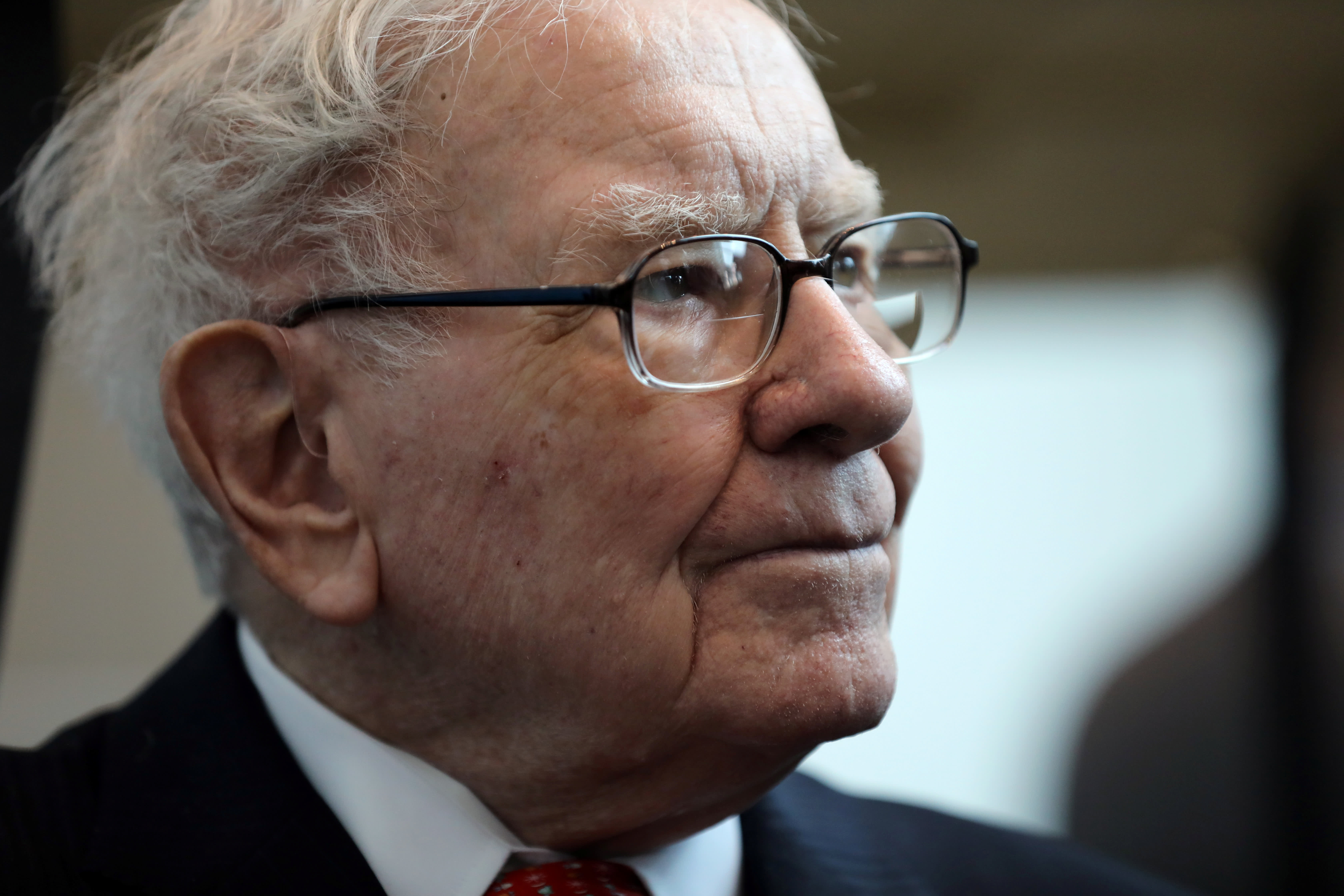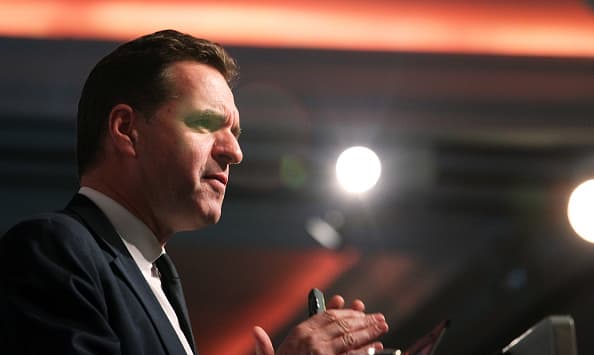Russian President Vladimir Putin attends a meeting of heads of the Shanghai Cooperation Organization (SCO) member states at a summit in Samarkand, Uzbekistan September 16, 2022.
Foreign Ministry Of Uzbekistan | via Reuters
Ukraine’s counteroffensive, which has seen vast swathes of Russian-occupied territory get recaptured, could be compounding Russia’s economic troubles, as international sanctions continue to hammer its fortunes.
Ukraine’s military has had stunning success in recent weeks, recapturing Russian-occupied territory in the northeast and south of the country. Now, Kyiv is hoping to liberate the Luhansk in the eastern Donbas region, a key area where one of two pro-Russian self-proclaimed “republics” is located.
Holger Schmieding, chief economist at Berenberg, said the recent Ukrainian military gains could hit Russia’s economy hard.
“Even more so than before, the Russian economy looks set to descend into a gradually deepening recession,” Schmieding said in a note last week.
“The mounting costs of a war that is not going well for [Russian President Vladimir] Putin, the costs of suppressing domestic dissent and the slow but pernicious impact of sanctions will likely bring down the Russian economy faster than the Soviet Union crumbled some 30 years ago.”
Ukrainian soldiers ride on an armored vehicle in Novostepanivka, Kharkiv region, on September 19, 2022.
Yasuyoshi Chiba | Afp | Getty Images
He highlighted that Russia’s main bargaining chip when it comes to the international sanctions imposed by the West – its influence over the energy market, particularly in Europe – was also waning.
“Although Putin closed the Nord Stream 1 pipeline on 31 August, the EU continues to fill its gas storage facilities at a slightly slower but still satisfactory pace,” he noted, adding that even Germany — which was particularly exposed to Russian supplies — could even get close to its 95% storage target ahead of winter.
Energy problems
Europe’s rapid shift away from Russian energy is particularly painful for the Kremlin: the energy sector represents around a third of Russian GDP, half of all fiscal revenues and 60% of exports, according to the Economist Intelligence Unit.
Energy revenues fell to their lowest level in over a year in August, and that was before Moscow cut off gas flows to Europe in the hope of strong-arming European leaders into lifting the sanctions. The Kremlin has since being forced to sell oil to Asia at considerable discounts.
The decline in energy exports means the country’s budget surplus has been heavily depleted.
“Russia knows that it has no leverage left in its energy war against Europe. Within two or three years, the EU will have gotten rid of its dependency on Russian gas,” the EIU’s Global Forecasting Director Agathe Demarais told CNBC.
This is a key reason why Russia has opted to cut off gas flows to Europe now, she suggested, with the Kremlin aware that this threat could carry far less weight in a few years’ time.
GDP slump
The EIU is projecting a Russian GDP contraction of 6.2% this year and 4.1% next year, which Demarais said was “huge, by both historical and international standards.”
“Russia did not experience a recession when it was first placed under Western sanctions in 2014. Iran, which was entirely cut off from Swift in 2012 (something that has not happened to Russia yet), experienced a recession of only around 4% in that year,” she said.
Statistics are scarce on the true state of the Russian economy, with the Kremlin keeping its cards relatively close to its chest. However, Bloomberg reported earlier this month, citing an internal document, that Russian officials are fearing a much deeper and more persistent economic downturn than their public assertions suggest.
Putin has repeatedly claimed that his country’s economy is coping with Western sanctions, while Russia’s First Deputy Prime Minister Andrei Belousov said last month that inflation will come in around 12-13% in 2022, far below the gloomiest projections offered by global economists earlier in the year.
Russian GDP contracted by 4% in the second quarter of the year, according to state statistics service Rosstat, and Russia upped its economic forecasts earlier this month, now projecting a contraction of 2.9% 2022 and 0.9% in 2023, before returning to 2.6% growth in 2024.
However, Demarais argued that all visible data “point to a collapse in domestic consumption, double-digit inflation and sinking investment,” with the withdrawal of 1,000 Western firms also likely to have implications for “employment and access to innovation.”
“Yet the real impact of sanctions on Russia will be felt mostly in the long term. In particular, sanctions will restrict Russia’s ability to explore and develop new energy fields, especially in the Arctic region,” she said.
“Because of Western penalties, financing the development of these fields will become almost impossible. In addition, U.S. sanctions will make the export of the required technology to Russia impossible.”
Sanctions ‘here to stay’
European Commission President Ursula von der Leyen delivers the State of the European Union address to the European Parliament, in Strasbourg, France, on Sept. 14, 2022.
Yves Herman | Reuters
“We have cut off three quarters of Russia’s banking sector from international markets. Nearly one thousand international companies have left the country,” she said.
“The production of cars fell by three-quarters compared to last year. Aeroflot is grounding planes because there are no more spare parts. The Russian military is taking chips from dishwashers and refrigerators to fix their military hardware, because they ran out of semiconductors. Russia’s industry is in tatters.”
She added that the Kremlin had “put Russia’s economy on that path to oblivion” and vowed that sanctions were “here to stay.”
“This is the time for us to show resolve, not appeasement,” von der Leyen said.
As the Kremlin scrambles to strengthen security ties, having been shunned by the West, a top Russian official stated on a visit to Beijing last week that Moscow sees deepening strategic ties with China as a key policy aim. Putin also met Chinese President Xi Jinping in Uzbekistan last week as the two countries touted a “no limits” relationship.
However, several commentators have noted that as Russia’s bargaining power on the world stage wanes, China will hold most of the cards as the two superpowers attempt to cement further cooperation.
“In the long term, China will be the sole economic alternative for Russia to turn to, but this process will be tricky, too, as China will remain wary of becoming overdependent on Russian commodities,” the EIU’s Demarais added.
Get CyberSEO Lite (https://www.cyberseo.net/cyberseo-lite) – a freeware full-text RSS article import plugin for WordPress.














